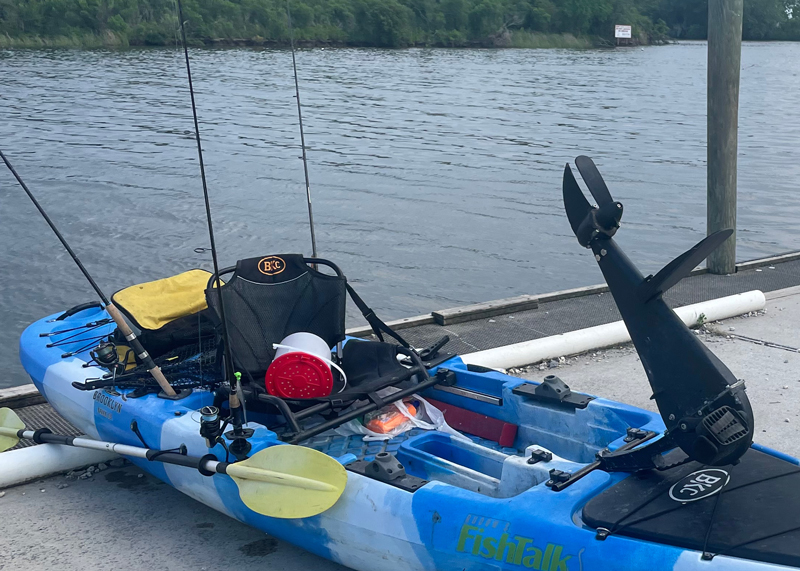Gear failure, temperature, rolling, bugs, and more — there are a lot of different things that can cut a kayak fishing trip short. But if you’re prepared you can minimize risks, deal with them as they arise, and get right on back to fishing.
Protect your Kayak Propulsion

Leash your primary form of propulsion, and always have a competent secondary on board. Leashing your primary will keep it safe in the event of a rollover, keeping you moving and saving yourself from an expensive replacement. A secondary propulsion form that can get you back to fishing and/or to the shoreline is essential if your drive bites the dust on the water, or you lose your main paddle. In many boats, a single-sided paddle won't do the trick once you get into some current or wind. A full paddle will be necessary to keep you fishing safely in most conditions. This is imperative, especially when fishing tidal waters alone. You never know what could happen when on the water and the last thing you want is to be stuck in an uncontrolled plastic tub blowing farther and farther from shore.
Prepare for Repairs
Preparing a personalized toolkit for your boat is essential and will be a bit different depending on how your kayak is rigged. Having the proper sized wrenches, pliers, screwdrivers, etc. on hand will open up a world of repairs that can be done without heading back to the dock. Research common issues that arise on the specific boat you use, and how others fix and prevent them. One thing to focus on, especially for anglers who tend to venture far from the launch, is the steering and propulsion systems. I’ve had my steering cables snap on at least two separate occasions. The first time I spent the rest of the day steering with my paddle, zig zagging all over the place while my buddies laughed their butts off and caught a bunch of fish. The second, I was prepared and able to replace the cables in about 15 minutes. Then I got right back to fishing.
If your primary form of propulsion is a pedal drive, bring an extra prop/fins, and tools to replace them. I leave all of my extras inside my dry storage. Also make sure you keep up with maintenance on your drive.
Know your Kayaking Environment
There’s nowhere to escape and warm up in the winter, nor to get away from the bugs in the summer, when you’re on a kayak. Researching where you’ll be fishing and knowing what to expect is a must. In the winter, I spend a majority of my time on the Eastern Shore millponds fishing for pickerel. I’ve found electronic hand warmers to be extremely helpful. They’ll help warm up frozen fingers, and most can charge a phone battery that's died from the cold. I also bring a shell layer with me year-round. Bibs will keep you dry, cover your skin from the mosquitos, and trap in heat in the winter. During colder months I prefer a Mustang float coat. I always bring a change of clothes with me, as well as fingerless gloves. If you plan on braving the Bay or any other larger water during the winter months, wear a dry suit.
Being prepared to make on-the-spot repairs to your kayak’s critical systems will allow you to keep fishing when you’d otherwise be shut down. And being properly prepared for the environment will keep you comfortable and let you focus on fishing, stay out longer, and stay safe. As with many things in fishing, proper preparation is key.
-By David Rudow, @reelinwithrudow